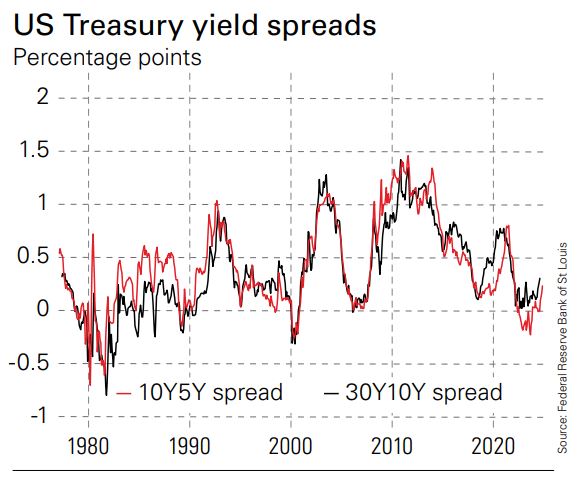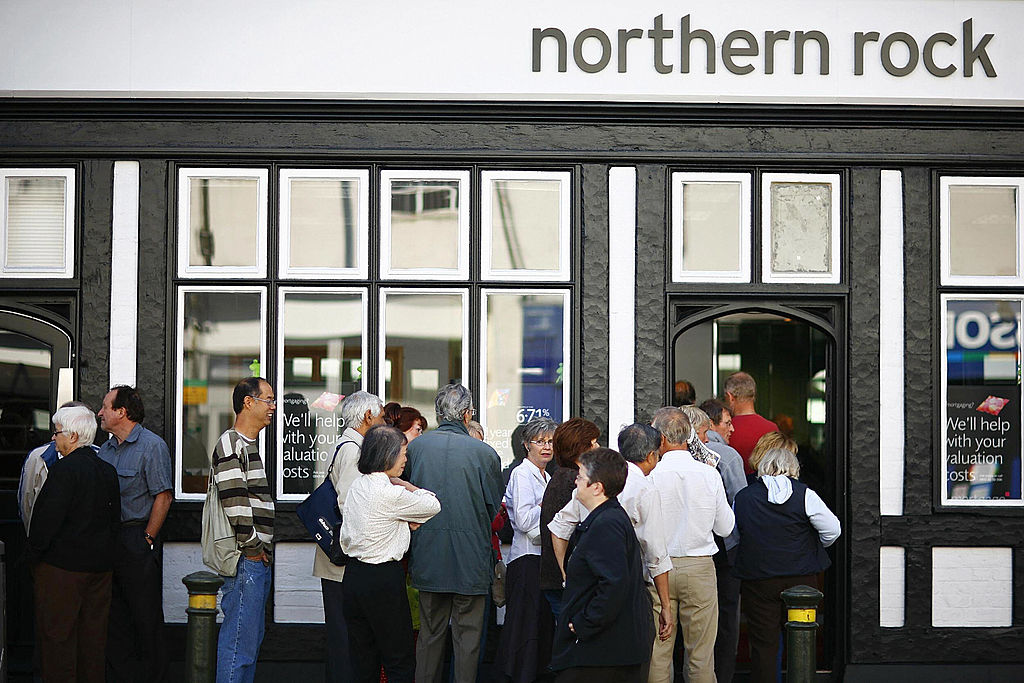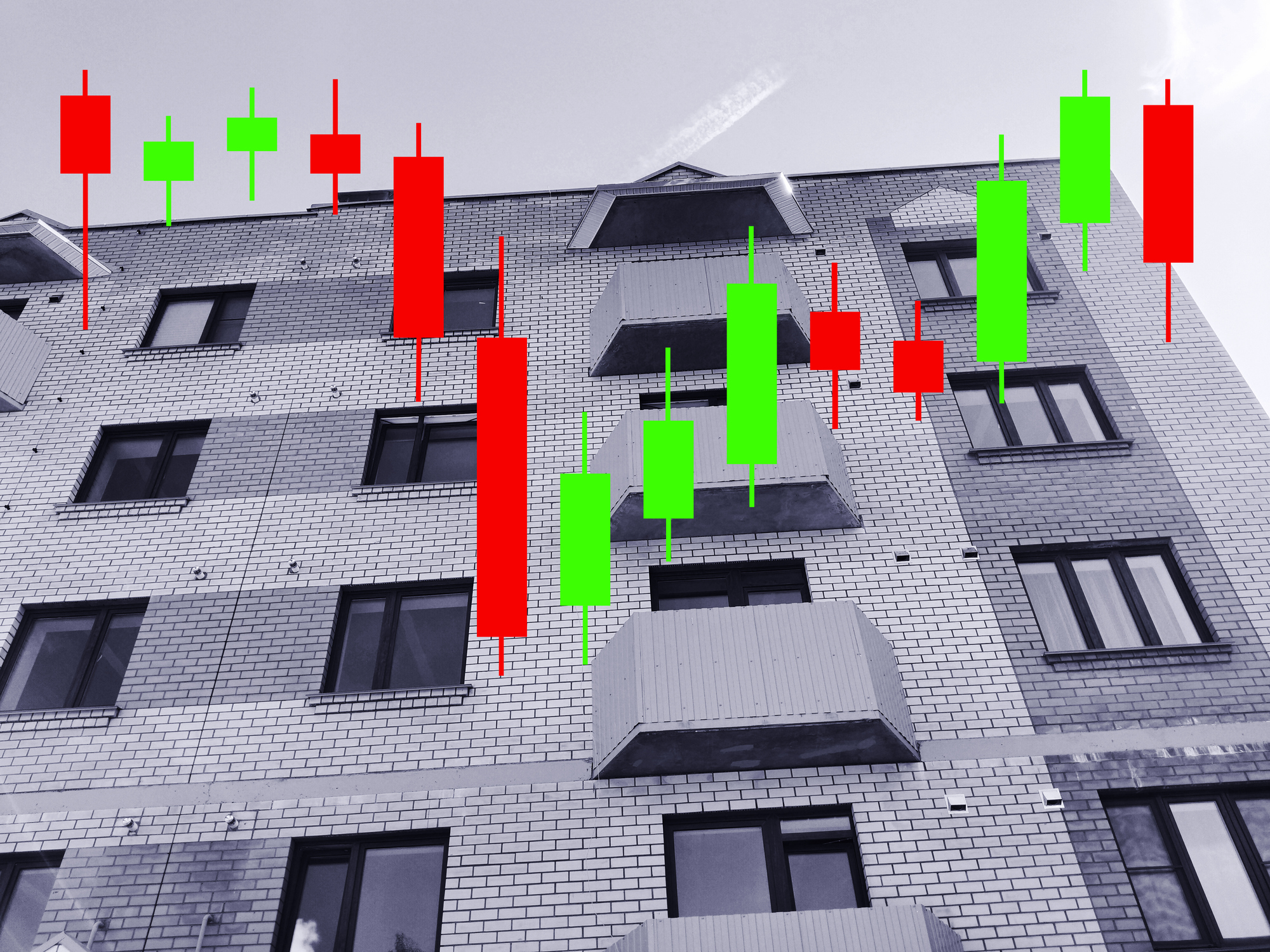Inflation risk continues for bond yields
Bond yields are ticking up even as interest rates fall, but they still don’t offer much protection against inflation.


Short-term interest rates are going down – the only questions are how much central banks cut, and how fast. Longer-term rates are another matter. Yields on US ten-year Treasuries are up by half a percentage point to 4.2% over the past month and UK ten-year gilts are up by a quarter point at the same level. That’s unusual: the only time in recent history that ten-year Treasuries have risen by that much immediately after the US Federal Reserve began cutting was during the 1995 soft landing.
Markets clearly do not believe we will return to the ultra-low rates of the past decade. This seems reasonable. Since 1962, the average (median) yield on the ten-year Treasury has been 5.6% and average inflation over the same period has been 3.09%. As a crude estimate of the real (inflation-adjusted) yields that investors might have been expecting (not what they got, which requires hindsight), the average difference between the two at each point was 2%.
If you figure that inflation will match the Fed’s target of 2%, then a 4.2% yield will give you an after-inflation return in line with the long-term average. If we consider inflation and yields only since 1990, when they’ve been consistently lower than in the 1970s and 1980s, the median difference was about 1.5%. The gap for the UK has been a bit higher: over 3% since the 1960s, but 2% since 1990. So overall bonds look priced for roughly fair value, if that’s the outcome we get.
MoneyWeek
Subscribe to MoneyWeek today and get your first six magazine issues absolutely FREE

Sign up to Money Morning
Don't miss the latest investment and personal finances news, market analysis, plus money-saving tips with our free twice-daily newsletter
Don't miss the latest investment and personal finances news, market analysis, plus money-saving tips with our free twice-daily newsletter
Time to worry about structural deficits?
Whether inflation will run at 2% is the big question. If it’s significantly higher, we’d expect investors to demand higher real yields (not just higher nominal yields). If it’s lower, we’d expect the opposite. We mentioned reasons why inflation could settle higher without being out of control, from fiscal policy to global trade to geopolitics. The latter is unpredictable, but the former seems clear.
The US runs a large deficit and that won’t change regardless of who wins the election. The UK is also heading in a direction of higher public spending. This is one plausible explanation for why yields are ticking up despite rate cuts: investors are worried about structurally larger deficits and higher inflation. In theory, long-term interest rates should be higher than short-term rates to reflect the risks that an investor takes in lending money for a longer period, so it may seem odd that ten-year yields are fairly close to both five-year yields (US: 4.05%, UK: 4.04%) and 30-year yields (US: 4.52%, UK 4.75%).
In practice, the typical term premium for holding longer-term bonds has been surprisingly modest. For the US, since 1977 when the 30-year bond was introduced, the average spread between the 30-year and the ten-year has been 0.28 percentage points and 0.34 percentage points between the ten-year and the five-year. True, spreads have been very volatile (see chart) and sometimes gone even lower.

Still, when starting from these yields, there isn’t much cushion if inflation beats expectations. Buying 30-year bonds now will be the right call if inflation turns out much lower, but on the balance of risks, shorter-term bonds look like better value.
This article was first published in MoneyWeek's magazine. Enjoy exclusive early access to news, opinion and analysis from our team of financial experts with a MoneyWeek subscription.
Get the latest financial news, insights and expert analysis from our award-winning MoneyWeek team, to help you understand what really matters when it comes to your finances.
Cris Sholto Heaton is an investment analyst and writer who has been contributing to MoneyWeek since 2006 and was managing editor of the magazine between 2016 and 2018. He is especially interested in international investing, believing many investors still focus too much on their home markets and that it pays to take advantage of all the opportunities the world offers. He often writes about Asian equities, international income and global asset allocation.
Cris began his career in financial services consultancy at PwC and Lane Clark & Peacock, before an abrupt change of direction into oil, gas and energy at Petroleum Economist and Platts and subsequently into investment research and writing. In addition to his articles for MoneyWeek, he also works with a number of asset managers, consultancies and financial information providers.
He holds the Chartered Financial Analyst designation and the Investment Management Certificate, as well as degrees in finance and mathematics. He has also studied acting, film-making and photography, and strongly suspects that an awareness of what makes a compelling story is just as important for understanding markets as any amount of qualifications.
-
 How much do you need to earn to afford the average rent?
How much do you need to earn to afford the average rent?Rental growth is slowing and making rents more affordable for tenants, but what hwo much do you need to earn to afford the average UK rent?
-
 FCA launches scam checker tool after 800,000 suspected to have lost money to fraudsters
FCA launches scam checker tool after 800,000 suspected to have lost money to fraudstersSavers and investors can use the tool to check if a firm is the 'real deal' and is actually authorised to provide the services it is offering
-
 Why Scotland's proposed government bonds are a terrible investment
Why Scotland's proposed government bonds are a terrible investmentOpinion Politicians in Scotland pushing for “kilts” think it will strengthen the case for independence and boost financial credibility. It's more likely to backfire
-
 The battle of the bond markets and public finances
The battle of the bond markets and public financesAn obsessive focus on short-term fiscal prudence is likely to create even greater risks in a few years, says Cris Sholto Heaton
-
 MoneyWeek experts pick the best investments for the next 25 years
MoneyWeek experts pick the best investments for the next 25 yearsMoneyWeek's experts predict the best investments for the next quarter-century. Tips range from defence and agriculture to Vietnam and Jardine Matheson
-
 How have central banks evolved in the last century – and are they still fit for purpose?
How have central banks evolved in the last century – and are they still fit for purpose?The rise to power and dominance of the central banks has been a key theme in MoneyWeek in its 25 years. Has their rule been benign?
-
 Waiting for a UK REITs rally – is real estate poised for a rebound?
Waiting for a UK REITs rally – is real estate poised for a rebound?Investors are still cautious about UK REITs. Private equity is snapping them up. One view must be wrong, says Cris Sholto Heaton
-
 Investors can tap into juicy yields in overlooked companies’ debt and equity
Investors can tap into juicy yields in overlooked companies’ debt and equityOpinion Ian “Franco” Francis, fund manager, Manulife CQS New City High Yield Fund tells MoneyWeek where he’d put his money
-
 Is Britain heading for a big debt crisis?
Is Britain heading for a big debt crisis?Opinion Things are not yet as bad as some reports have claimed. But they sure aren’t rosy either, says Julian Jessop
-
 A strange calm in credit
A strange calm in creditCorporate bond markets remain remarkably relaxed, with yields that offer little compensation for risks
